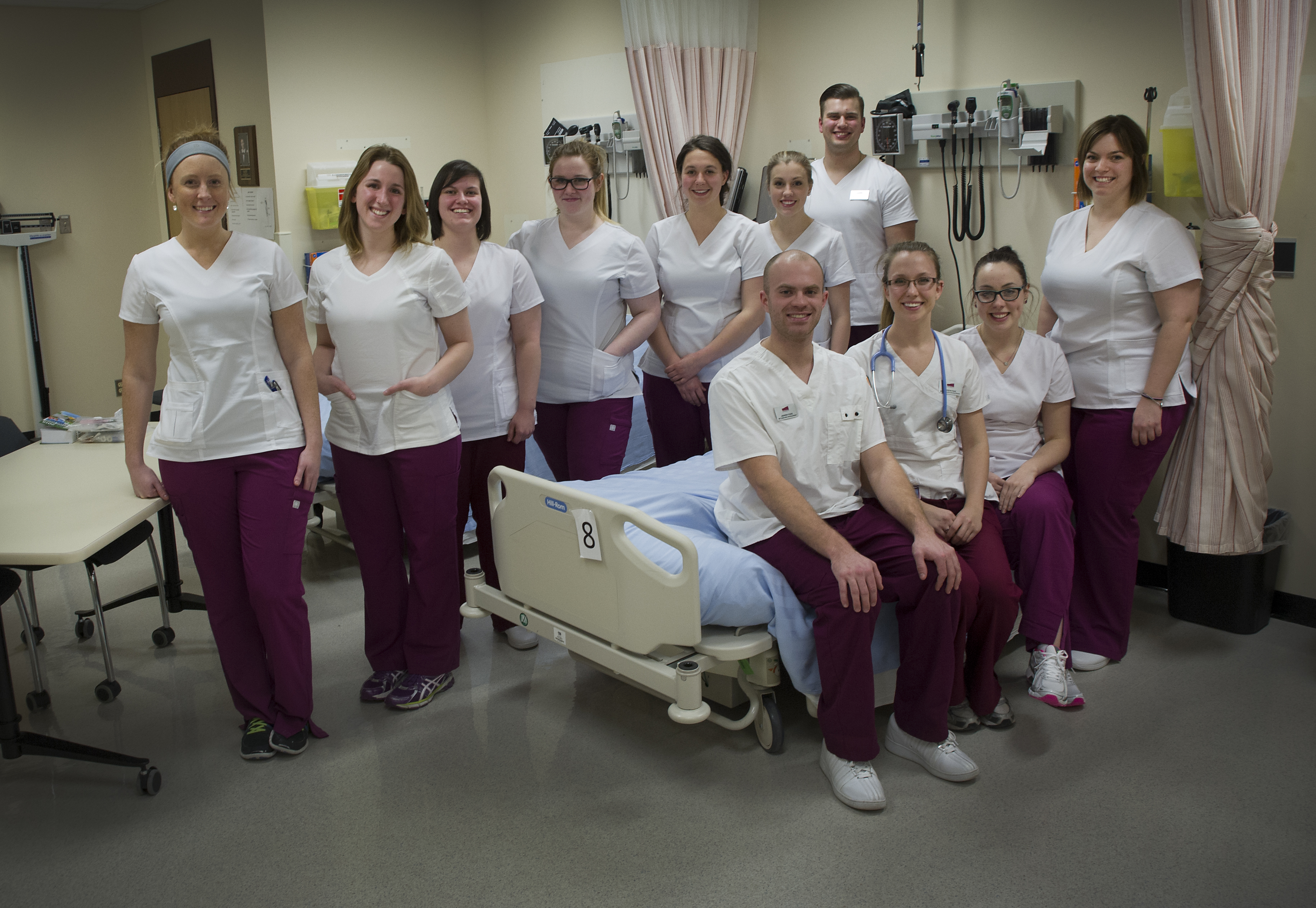School of Nursing brings back standardized uniforms
 Everything old is new again.
Everything old is new again.
A large part of the student identity up until about 30 years ago, the School of Nursing (SON) has brought back the standardized uniform.
With so many students working in health professions on busy hospital floors, clinics and other health-care settings, it’s a way to help identify SON students to patients and nursing staff.
First-year students in the bachelor of nursing (BN) (collaborative) program are now wearing white tops and burgundy pants to nursing laboratories and clinical settings.
The response to the new uniform look has been overwhelmingly positive, coming from patients, families, nursing staff and students themselves.
“I love it,” said Courtney Jobe, a first-year, fast-track BN student from Halifax, N.S. “I feel more professional, and it’s nice to be able to identify each other on the floor. Patients and families are also better able to identify us in clinical settings.”
“I feel like I’m stepping into a role,” said Andy Wilson, another BN student in her first year of the fast-track option. “It gives me a bit of comfort.
“I get questions about the uniforms,” she continued. “Patients do like them, and they want to know what school you are with. They’re curious, and they ask about our studies.”
So, along with presenting a more professional and identifiable look, the standardized uniforms also function as conversation starters.
“The new uniforms help patients, registered nurses and members of the interdisciplinary team recognize our students and identify them with the excellent contributions they are making to patient and family health,” said Dr. Alice Gaudine, dean, School of Nursing.
Though recently introduced, the SON’s adoption of standardized uniforms goes back a few years to a 2011 pilot study headed up by Dr. Caroline Porr, an associate professor in the school.
Dr. Porr and a team of nurse clinicians, educators and researchers wanted to find out if adult patients’ perception of a nurse’s professional image in Newfoundland and Labrador was associated with uniform color,  pattern and style.
pattern and style.
They presented photos of the same nurse in eight different uniforms to adult patients in two larger hospitals.
“The majority of patients who participated in our study preferred that their registered nurse be dressed in a traditional white uniform,” said Dr. Porr, adding that nurses in solid white tops and pants were perceived in the study as more competent, attentive, professional, approachable and caring.
It’s information that educators from each of the three nursing sites – the School of Nursing, the Centre for Nursing Studies, and the Western Regional School of Nursing – have used to introduce a standardized uniform for their students.
“We’ve already had comments about how much patients and nurses appreciate the standardized uniforms for so many reasons,” said Dr. Porr.